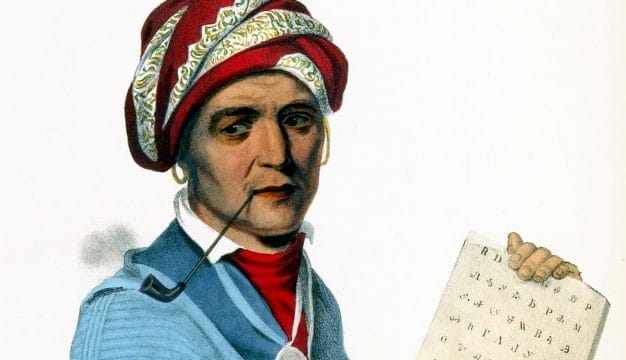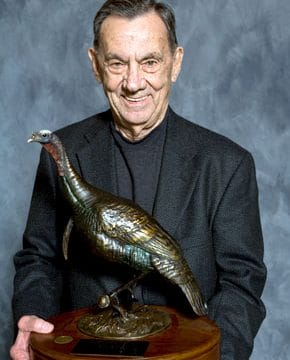Lewis Sewall
Lewis Sewall (1760-1833) was a minor government functionary in the early nineteenth century in the section of the Mississippi Territory that eventually would become Alabama. He is remembered primarily for writing a satiric poem entitled The Last Campaign of Sir John Falstaff the II; or, The Hero of the Burnt-Corn Battle. This poem is the first known literary text to be published in the Mississippi Territory, appearing in 1815, thus also earning Sewall the honor of being Alabama’s first poet.
Sewall was born in Charles County, Maryland, on February 2, 1760, to Charles and Ann Goodrich Sewall, one of at least three children. He was married to Elizabeth Howard Wailes in 1797 and with her had eight children. He settled in the Mississippi Territory around 1801. Sewall held two positions in the Land Office of the Mississippi Territory: Register of the Land Office and later Receiver of Funds. In the first job, Sewall was responsible for the distribution and recording of the sale of public land, and his subsequent position gave him the authority to collect money for such sales. His superior for both positions, Judge Harry Toulmin, expressed concerns over Sewall’s honesty after Sewall developed a friendship with Col. James Caller and his brother John Caller. The Caller brothers had a reputation for corruption, being known for bribing public officials—such as Sewall—to approve deals in which they acquired large tracts of land. The brothers also had military aspirations, and on more than one occasion, James Caller led parties of soldiers to attack the local Creeks without provocation. One such attack in July 1813 became known as the Battle of Burnt Corn Creek. During the skirmish, Caller’s men were routed by a much smaller party of Creeks defending their land; Caller and an aide were later found wandering lost, dazed, and half-naked in a swamp. Caller’s attack on the Creeks was doubly disastrous because it incited a retaliatory strike by the Creeks at Fort Mims, in which approximately 250 settlers were killed and 100 taken captive. The Creek War that followed ended Creek power in the region, opened up their land for white settlement, and ultimately led to their forced removal from Alabama.
Not long after the Battle of Burnt Corn Creek, James Caller publically accused Sewall of embezzlement. He claimed that Sewall had taken payment for land sales but had failed to record the transaction and simply kept the money. Caller apparently wrote a handbill (as referenced in Sewall’s 1815 preface to The Last Campaign) that charged Sewall of wrongdoing. Sewall’s response was to satirize Caller’s embarrassing rout by the Creeks at Burnt Corn in The Last Campaign of Sir John Falstaff the II; or, The Hero of the Burnt-Corn Battle.
As the title of the poem indicates, Sewall likens Caller to Sir John Falstaff, the bumbling, cowardly character in William Shakespeare’s Henry IV who prefers drinking to fighting. In heroic couplets, Sewall details Sir John’s exploits against the Creeks in search of military glory. Not long after attacking the Creeks, however, Sir John calls a retreat and abandons his troops. Sewall also likens Caller to the grass-eating Nebuchadnezzar of the Bible and the ill-fated and confused Don Quixote of Miguel de Cervantes’ seventeenth-century novel of the same name. Like Quixote’s attacks on windmills he mistakes for dragons, Caller (as Falstaff) attacks trees that he believes to be Creek warriors. He subsequently wears his boots backwards to mislead anyone on his trail, and at one point, he creates fake “monster” tracks in hopes of scaring anyone attempting to follow him. Falstaff and his aide are rescued, but Sir John contracts dysentery, which ends up being a greater deterrent to both his enemies and his friends than his military prowess. The poem ends with a rollicking “New Song” about Sir John, to be sung to the tune of Yankee Doodle.
Although the public knew from the poem’s preface that he was the author of The Last Campaign, Sewall did not openly acknowledge its authorship on the title page until 1833, when he published an expanded version as part of his Miscellaneous Poems. Sewall died that same year in Washington County.
Works by Lewis Sewall
The Last Campaign of Sir John Falstaff the II; or, The Hero of the Burnt-Corn Battle: A Heroi-Comic Poem (1815).
The Miscellaneous Poems of Lewis Sewall, Esq., Containing the Last Campaign of Col. J. Caller—Alias Sir John Falstaff the Second—Alias the Hero of the Burnt Corn Battle; The Birth, Progress, and Probable End of G. F. Mynheer Van Slaverchap’s Grandson—Alias Doctor Furnace; The Battle for the Cow and Calf; The Canoe Fight; And Other Miscellaneous Matters (1833).
Additional Resources
Beidler, Philip D. First Books: The Printed Word and Cultural Formation in Early Alabama. Tuscaloosa: University of Alabama Press, 1999.
———. “Literature and the Art of Political Payback in an Early Alabama Classic.” Southern Literary Journal 30.1 (1997): 1-12.



